I
AS THE POWER of television grew in the late fifties and early sixties, those who were propelled forward in sports and other walks of life began to find themselves under a new, relentless scrutiny… In the past, sports had been sports, and while it is true that it was also a form of entertainment, the athletes themselves, with few exceptions, were first and foremost athletes, not entertainers, and by and large that was the way they thought of themselves. They were supposed to go out there, play hard, and win, and if they did, that was enough. But with the coming of television, things began to change: the show was now as important as the event – the athlete was supposed to be not just someone who did his job but someone who was a star as well.
- David Halberstam, October 1964
II
It was America’s most popular sport of the time, baseball, that was to the forefront of Halberstam’s mind. The ubiquity of its star players’ names before television – Mickey Mantle, Roger Maris, Hank Aaron etc. – translated to a hunger for more information, greater exposure and a clearer look at who these men were when it became possible to see them from one’s own living room.
Such figures had been always written about extensively, and their deeds were regularly described via radio. Those who could attend games would witness first-hand the players’ brilliance, but when these tens of thousands became tens of millions, the dynamic shifted.
Following a play that had left the Yankees’ legend Mantle looking foolish in the fourth game of the 1964 World Series, it was not for nothing that he turned to the St. Louis Cardinal’s Roger Craig and said: “You son of a bitch. You show me up in front of forty million people.”
To invert what the author Lee Marshall wrote of the intrigue surrounding Bob Dylan in this same era, because the actions of these most popular of sportspeople had public meaning, they were stars. For better or worse, they were a main attraction of this new medium and every act possessed possible consequences.
Writing in the 1990s, Halberstam’s assessment of television’s arrival was informed by its growing importance across the decades that followed. Beyond baseball alone, the sportspeople most capable of leaving a lasting mark in the public’s imagination tended to be those best suited to television’s spotlight.
At once illuminating and deceptive, the Premier League (1992-) has cultivated a stranglehold on over a century-and-a-half of English football history that is in no small part down to a television deal it struck from the outset.
III
After reading Halberstam’s book in the week leading up to this year’s two All-Ireland hurling semi-finals then, it struck me as peculiar that hurling seems somewhat exempt from his assessment.
Undeniably, Shane O’Donnell’s goal for Clare, Eoin Murphy’s match-winning save for Kilkenny, or Nickie Quaid’s contact lenses became national talking points this week because the games were televised on RTÉ. The expectation of showmanship, however, or that these elite players must be both supremely talented and stars, is not apparent.
For all that I believe inter-county hurling is being played at a level hitherto unimaginable, the players themselves are increasingly anonymous.
Helmets have something to do with it; John Mullane, Seán Óg Ó hAilpín or Diarmuid O’Sullivan have faces many would still recognise owing to their helmet-less heads during the 1990s and ‘00s. Beyond keen followers of the modern game, it is doubtful as many would identify Tony Kelly, Seamus Callanan or Sean Finn with the same certainty today.
And of course, the general reluctance of players to partake in mid-season media duties beyond those which are sponsored events only serves to heighten this anonymity.
While for the most part we know who the outstanding players are, even as TJ Reid scored the point that put him clear of Patrick Horgan in the all-time scoring charts on Sunday evening, Darragh Maloney and Michael Duignan on commentary were left with only a few seconds to acknowledge its occurrence before Eibhear Quilligan restarted the game with his puck out.
Quick as hurling people are to proclaim the sport’s magnificence, the praise doled out to its most effective players is both effusive and yet strangely impersonal.
IV
Solidified on the Sunday, this thought had crossed my mind as I watched Saturday’s semi-final in Croke Park.
Sat in the lower Hogan Stand surrounded mostly by Limerick supporters, five or six men in their late 30s and early 40s occupied the row in front of me a little after the 6PM throw-in.
A stag party, perhaps, or maybe a lads holiday in Dublin, they were there for the event rather than any particular allegiance to either county. (If this wasn’t abundantly clear from the outset, one of the guys, from New Zealand as he explained though nobody seemed to ask him, popped out his phone within minutes and proceeded to video call a friend who wasn’t there as the match played out.)
That being said, most of them were gripped to the action while one fella visibly slept throughout a portion of the second-half. Truth be told, with the game already settled in Limerick’s favour I couldn’t but eavesdrop on what they were taking from a game that was evidently foreign to them.
Each high catch of the sliotar had them visibly excited, as did Limerick’s quick exchanges through the hand and hurl. When Nickie Quaid or Eanna Murphy drove a puck-out from their goal to the opposite end of the pitch, it was clear that the distance which the sliotar travelled impressed them – irrespective of where it landed.
Without wishing to do them any disservice, I cannot imagine they knew anything of the individuals on show. Nevertheless, the spectacle was no less spectacular for that.
As a relatively seasoned viewer of hurling, I allowed myself to watch some of that second-half vicariously through them. What on earth would they tell people about a Mike Casey catch that happened directly in front of us? And did it matter that the player in green who had reached across his opponent to grab the sliotar and score the match’s opening goal was called Aaron Gillane?
New an experience as hurling was to these guys, the majority watching on television would only know who these players were when told by the commentator. Still shrouded in a vague kind of anonymity, hurling doesn’t cultivate individuals so transcendent that the game itself is ever mistaken for not being the star attraction.
V
This impersonality informs how the game and its players are assessed, of course.
A knock-on effect of television coverage is televised analysis and one wonders if the country’s leading hurlers are content to forego the positive trappings of stardom for what it allows them when things go awry.
TJ Reid, Eoin Cody and Shane O’Donnell were the subject of great praise on Sunday evening; each a viable contender for player-of-the match.
Anthony Daly, Jackie Tyrrel and Liam Sheedy know what it is to win and lose such big games, and any attempts to identify those other players whose performances may have contributed to the effectiveness of their opponents were carried out with reluctance and little detail.
Tactical systems, the referee’s decision-making or bad luck were more easily reached for as reasons for Clare’s defeat. In this regard, hurling’s analysis mirrors the game’s own fealty to Halberstam’s historic ideal of a sportsperson’s prerogative: “play hard, and win… that was enough.”
Hurling people abhor the criticism of beaten teams, almost as much as they loves the game itself.
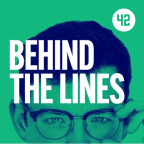
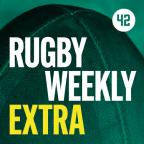
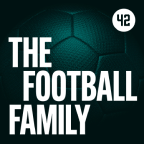



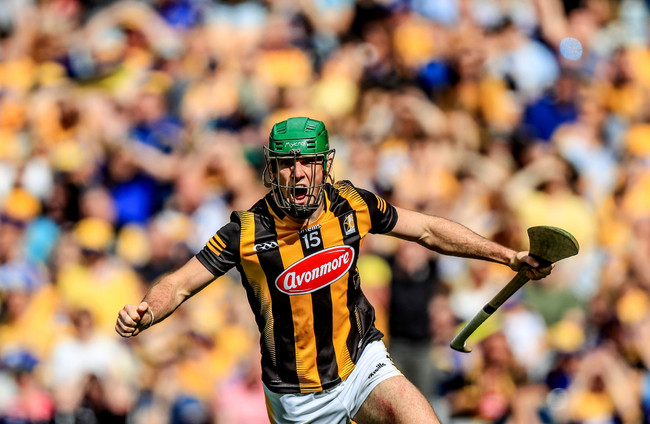


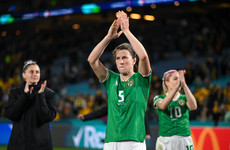

Great article. I’ve long thought that gaa players should have names on jerseys to increase the enjoyment to the more casual fan. It’s a big change to go with squad numbers, but half the time, the announced line up is not the actual line up so doesn’t make too much difference
As writer points out players faces are hidden with helmets. Some players are immediately recognisable by their movements but most are dusguised. Like the bank robber wearing a helmet?
At an unimaginable level ?? Standard is very poor this year compared to previous years. Limerick are way behind where they were four years ago and there’s no team able to pass them out. Kilkenny team of the noughties would wipe the floor with all the present teams